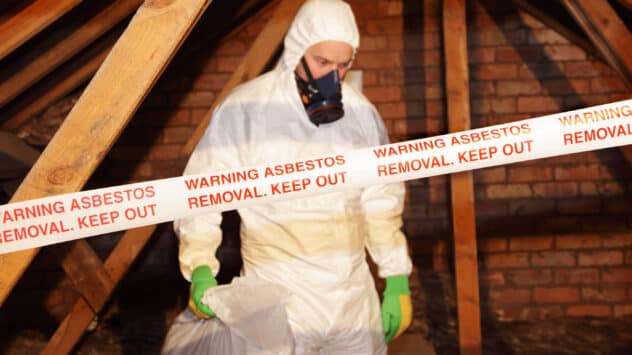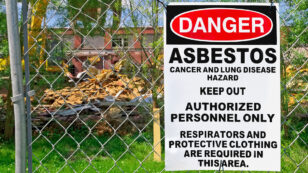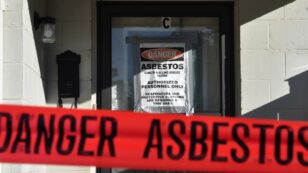
A Triumph and Disgrace: The Very Slow Road to Banning Asbestos
Like almost all things chemical in the United States, the recent announcement by the Biden administration that it is banning a major form of asbestos is both a triumph and a disgrace.

Like almost all things chemical in the United States, the recent announcement by the Biden administration that it is banning a major form of asbestos is both a triumph and a disgrace.

The Food and Drug Administration (FDA) has found more asbestos in make-up sold at Claire’s, an accessory store geared towards young teenagers. The store voluntarily recalled its Claire’s JoJo Siwa Makeup Set after FDA testing turned up traces of the cancer-causing material, the agency announced Thursday. Beauty Plus Global also recalled its Beauty Plus Global […]

By Jessica Corbett In a report that elicited calls for congressional action, The New York Times revealed Wednesday that “senior officials at the Environmental Protection Agency disregarded the advice of their own scientists and lawyers in April when the agency issued a rule that restricted but did not ban asbestos.” Asbestos is a group of […]

The U.S. Food and Drug Administration (FDA) issued a warning Tuesday urging customers not to use certain Claire’s cosmetics products that may be contaminated with asbestos. FDA testing turned up tremolite asbestos in the following products, the agency said: Claire’s Eye Shadows – Batch No/Lot No: 08/17 Claire’s Compact Powder – Batch No/Lot No: 07/15 […]

By Jessica Corbett A Reuters investigation published Friday charges that Johnson & Johnson, a multi-billion dollar company known for its healthcare products, knew for decades that its iconic talcum baby powder “was sometimes tainted with carcinogenic asbestos,” but concealed the information from regulators and the public. Johnson & Johnson knew for decades that asbestos lurked […]

The U.S. Environmental Protection Agency (EPA) isn’t doing enough to protect the 50 million school children and seven million teachers and staff who spend time in U.S. private and public schools from asbestos exposure. That’s the conclusion of a report released Monday by the EPA’s Office of Inspector General (OIG), the agency’s internal watchdog. The […]

Reports surfaced this month that the U.S. Environmental Protection Agency (EPA) had proposed a significant new use rule (SNUR) for asbestos in June, requiring anyone who wanted to start or resume importing or manufacturing the carcinogenic mineral to first receive EPA approval. Advocates and some EPA employees raised concerns that the SNUR could pave the […]

Attorneys and scientists with the U.S. Environmental Protection Agency (EPA) objected to the Trump administration’s proposal of a “significant new use rule” (SNUR) for asbestos, according to internal agency emails obtained by the The New York Times. Trump’s former EPA boss Scott Pruitt quietly announced the proposal in June, framing the plan as an “important, […]

Asbestos killed at least 45,221 Americans between 1999 and 2015, the Center for Disease Control and Prevention found. But President Donald Trump has long expressed his support for the dangerous mineral currently banned by 65 countries. “If we didn’t remove incredibly powerful fire retardant asbestos & replace it with junk that doesn’t work, the World […]